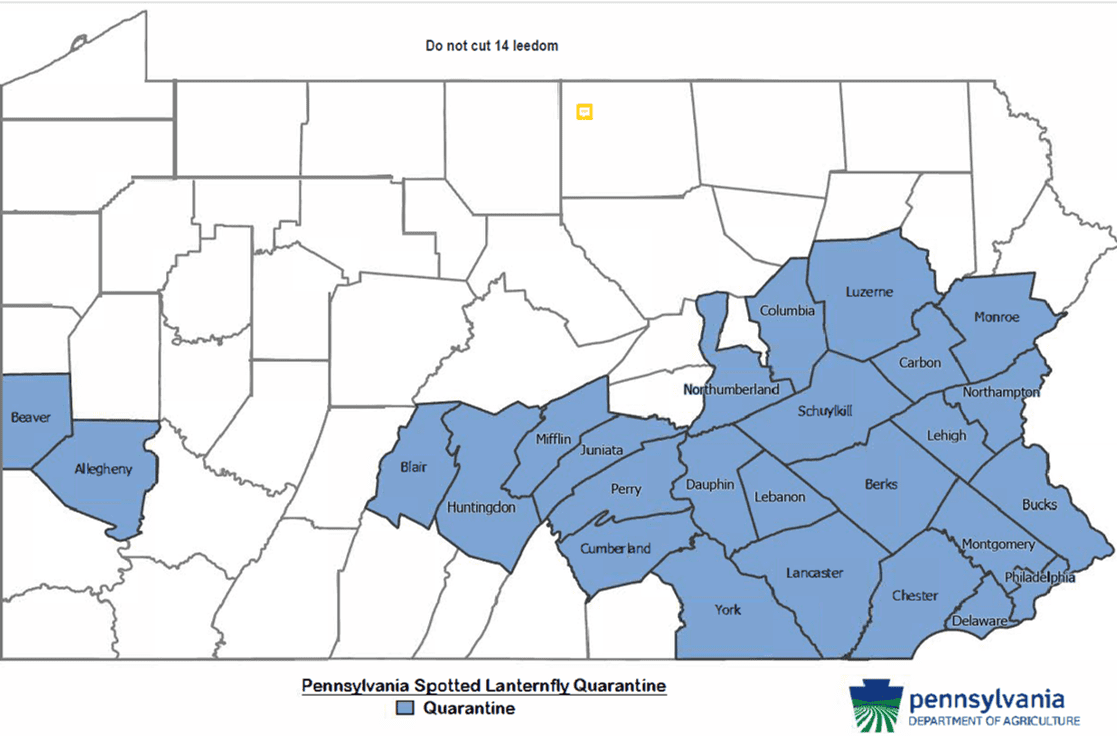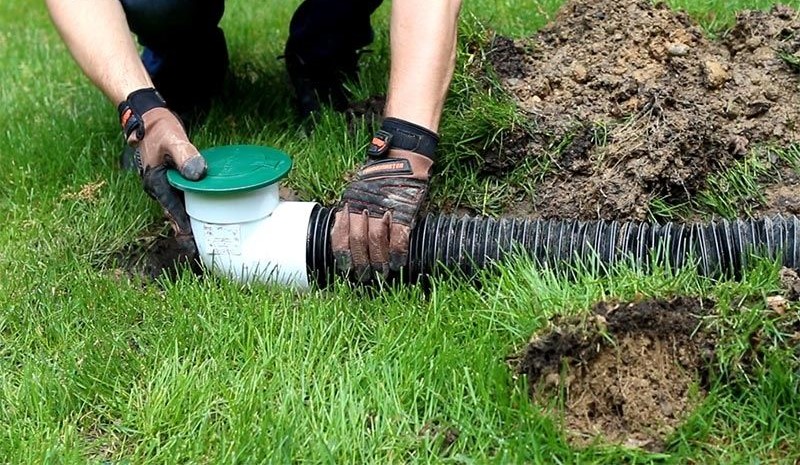How to Fight Against Spotted Lanternfly
Background: The Spotted Lanternfly (SLF or Lycorma delicatula) is a planthopper that is indigenous to China, India, and Vietnam. In its native habitat it is kept in check by natural predators or pathogens. In September 2014, it was first recorded in the United States, and it is now an invasive species in eastern Pennsylvania, southwestern New Jersey, northern Delaware as well as northern Virginia. It has recently invaded Bucks County and is likely to spread significantly next year.

Damage: Trees can develop weeping wounds of sap on their trunks. Heavy infestations can cause honeydew secretions to build up at the base of the tree, blackening the soil with fungal mats around the base of the tree. The sap may attract ants, bees, hornets, and wasps to feed on it, which can cause death.
Bucks County has been Quarantined: SLF has invaded Bucks County a few years ago and it now on the quarantine list. In 2020, the Pennsylvania Department of Agriculture expanded the number of counties from 14 to 26 (see map below). Bucks was previously on the list and the SLF has spread significantly last year. It has no known natural predators. Praying mantises and assassin bugs will eat them, but they are opportunists and eat what’s directly in front of them. The population of praying mantises is unlikely to cause any impact to SLF.
Efficacy: Soil injection has been found to be highly effective. Insecticide spraying is also effective but has limitations. Other forms such as Banding (see picture below) have not been found to be effective form of insect control. In addition, the method of injecting slow release probes into the trunks of trees has not proven to be very effective. That being said, it has also been shown that when certain trees have the insecticide applied, the Spotted Lanternfly travels to the unsprayed deciduous trees.
Evolving Threat: Spotted Lanternflies are still considered an emerging pest and they are an unusual pest, which makes them harder to understand. As we learn more about this interesting but destructive pest, we will provide updates. The good news is that, due to research performed by The Pennsylvania Department of Agriculture, Penn State and other universities, we have learned a lot about how to control SLF.
Treatment Options for Spotted Lantern Flies
The two primary ways to effectively Control Spotted Lanternflies are:
- Soil injection: A process where an insecticide is delivered to susceptible tree or shrub through the roots of the plants. The roots absorb the insecticide and the material moves up, through the living parts of the plants and into the canopy.
- Foliar spray: This is the process of spraying the tree with an insecticide. There are many insecticides being used to treat spotted lanternflies however, they are not equal. It is important to use the right material to avoid unwanted results.
How to Get Rid of Spotted Lanternflies?
So, what works the best?
Government agencies have evaluated the results of each method. They recommend: Soil Injection or a Foliar Spray Program. Therefore DKC’s suggested SLF control program consists of either:
- Soil Injection during the spring. (Spring) or
- Spot Foliar Spray Treatment late in the growing season. (September to October)
Soil Injection provides the best protection of plant material and provides an eco-friendly application with no spray drift.
- Preserves Beneficial Insects: Soil injection reduce harm to non-target insects. There are hundreds of insects on trees that provide necessary ecological functions and it is important to preserve these beneficial insects. The only insects that are impacted by soil injection are those that are feeding on and damaging the tree.
- Eliminates Spray Drift: Soil injections eliminate spray-drift. That is, when spraying a tree, sometimes the material will drift to non-target locations.
- Protection From Other Chewing Pests: While the target of the treatment is Spotted Lanternflies, the injected plants will also have protection from other chewing pests such as Japanese Beetles.
- Less Feeding: The injections work well to protect the treated trees and shrubs but large populations of Lanternflies often continue to harbor (live) on the plant materials. Fortunately, it appears as though lanternflies harboring on an injected plant feed less than lanternflies on untreated plants.
- When: Soil injection is done in the spring, before damage is done to the trees and shrubs. Also, the insecticide injected doesn’t wash off in the rain. These are both major benefits of soil injections.
- Timing of soil injections is extremely important!
- Timing is another consideration (and sometimes a stumbling block). Soil injection applications should be completed between mid-late March and mid-late May (preferably early to mid-May). In reality, the timing is determined by the plant and the weather, not the calendar. The earliest soil injections can be done is at “bud swell”. This is when the plants begin emerging from dormancy and the buds start growing – they “swell”. This is typically in the later part of March.
- Once the leaves of the trees/shrubs are fully extended (have grown to their full size) an injection will not be fully effective. This is typically late May. The issue is, when the leaves are fully extended, it can take up to three months for the material to reach all parts of a tree. While the plants will have the benefits of the injection late in the season (when the Lanternflies are adults), the plants should be considered unprotected in June, July & August if the injection occurs after the leaves are fully extended.

Foliar Spray Program for Spotted Lanthernflies
- Pro: Works fast, provides immediate ‘knock-down’ of lanternflies at the time of spraying and has a small residual affect (it continues to work after the treatment).
- Con:
- Short Residual period: Rain and sunlight breakdown the material which reduces the residual period. Due to this, we schedule the three treatments about 4-6 weeks apart.
- Weather: Spraying is not always possible due to rain and wind.
- Spray Drifting: With large trees that are near a property line, there can be issues with the spray drifting onto neighboring properties. In these cases, we will treat some of a tree but not all of it, which leaves a portion of the tree unprotected.
Contact us at 215-860-5066.
Banding Does Not Work

Spotted Lantern Fly PA Quarantine Area As of March 2020

Integrated Pest Management (IPM): DKC proudly uses IPM in all of its application procedures in accordance with the Pennsylvania Department of Agriculture’s IPM Standards. Contact us today at 215-860-5066 so we can help control you Spotted Lanternfly populations.







